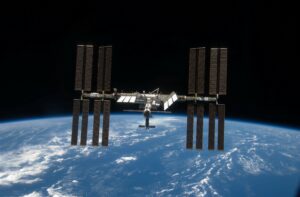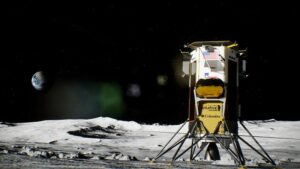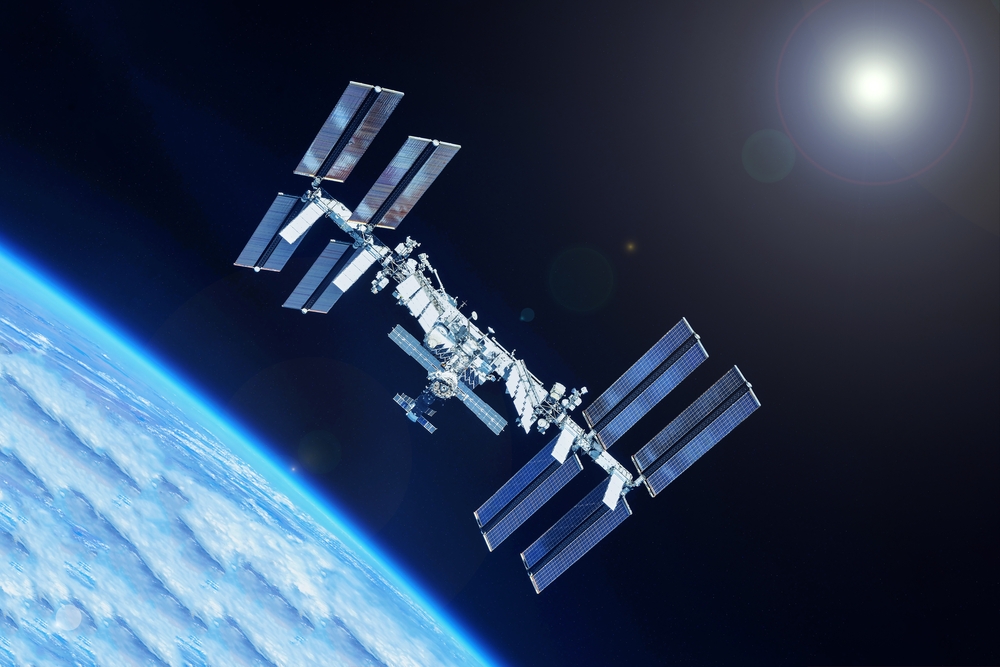The commercial space sector is rapidly growing at an extraordinary pace as demand moves towards space-rated unified system hardware for shorter development times and lower costs amongst satellite busses, subsystems and payloads. The increase of commercial missions in Low-Earth Orbit (LEO), High-Earth Orbit (HEO), on the moon and beyond still emphasizes the need for reliable, robust space electronic systems in critical areas including Earth observation, computation and data handling, communication, and power control.
The Shift to Integrated Space Systems

The exponentially increasing demand for high performance capabilities in space has led to a shift from traditional space qualified COTS boards to pre-integrated, space-ready systems that are coming to market more rapidly than ever.
Accelerated timelines in space innovations have pushed the commercial space sector towards more economical commercial off-the-shelf (COTS) technologies and away from custom space-qualified systems requiring extensive design, testing, and qualification processes without sacrificing key performance indicators of radiation tolerance, reliability, spaceflight pedigree, and risk management.
To provide space qualified, fully integrated systems to control specific satellite functions such as image data processing, subsystem power control, and navigation, commercial space companies are seeking space-ready orbital systems with computational, input/output, and communication functionality.
Five common space-ready systems include: Earth Observation, Communications, Computation and Data Handling, Power Control, and Robotics with Vision. These fully integrated systems offer middleware and some mission software to provide a jumpstart for commercial space companies striving to shorten development time.
These subsystems provide faster processing and better integration, while withstanding the rigors of launch and the space environment to meet the needs and expectations of the space industry for not only LEO, but HEO, Lunar, and Deep Space exploration.
5 Space-Ready Orbital Systems
The digitization of space electronics using COTS systems has enabled tighter integrations and highly adaptive scalability to facilitate cost-effective innovations, reducing the bottlenecks and connectivity difficulties associated with more cumbersome development of space electronics.
Five typical examples of cost-effective, COTS-based space systems are outlined below.
Earth Observation
In today’s space market, Earth Observation is about 3/4 of the LEO satellite market. At the heart of these satellite systems are the optics steering and focus mechanisms and the cameras, which have a multitude of data transfer protocols to provide high quality observations and monitoring on a global level.
Between meeting the needs for military users to get real-time information to warfighters and detect threats beyond the horizon to assisting scientists with global temperature monitoring, the use of Earth Observation systems is endless. Qualified hardware and software combined with the engineering flexibility of COTS space-ready systems provides improved reliability and intense data processing to ensure compatibility with the most advanced camera sensors for superior Earth Observation.
Communication

The communication needs for space are endless. As the number of electronics being implemented into orbit has skyrocketed in the last decade, stand-alone technologies such as Ethernet Edge Routers, Wireless Access Points, and Ethernet Switches are used to ensure communication in orbit. Yet, as the industry shifts to space-ready electronic systems, there is a demand for a central networking communication architecture.
The Space Digital Backbone (DBB) is helping to streamline high performance onboard computation and expedite valuable data assets for transmissions within a spacecraft or inter-constellation as well as back on Earth. Aitech sees this integrated communications backbone as a means to enable seamless integration and high-speed reliable, secure connectivity between internal/external communications systems, cameras, local edge computing, and shared storage elements throughout all levels of orbit.
Communications, Computation & Data Handling

Communication, Computation and Data Handling (CC&DH) systems are essential to vehicle operations as they function as the brain of the vehicle. This is especially true of autonomous vehicle operations and reconfigurable satellite nodes within a swarm. Additionally, as the Internet of Things (IoT) grows in space, CC&DH systems need to be easily adaptable to meet the various high-speed data protocols of space electronics and edge sensors, while responding to multiple high-speed data streams and quickly converting data from one protocol to another.
CC&DH capabilities are essential in today’s populated space landscape as they empower payload sharing and interface satellite buses as well as satellite swarm, constellation positional, and mission management. An example of successful CC&DH applications can be found in IM-1 mission, a complete avionics computer systems provided by Intuitive Machines that successfully landed on the Moon in early 2024. Aitech provided the complete conduction-cooled hardware for the Nova-C avionics system used for navigation, rocket motor control, a payload controller, and image data processing. This unique dual SBC system leverages RS-422, SpaceWire cameras, and NAND flash storage in an all-in-one space-rated avionics system optimized with many digital and analog input/output capabilities.
Power Control
Power systems cover all aspects of energy production, storage, and conditioning, for all types of space applications. Power control distributes power throughout the spacecraft to assure mission success. Power controls include:
- Enable arm and fire controls for antenna, solar panel, payload ring, and complimentary payload adapter release mechanisms. Highly integrated electronics are needed in small satellite subsystems to appropriately distribute the power supply across sensors, actuators, and motors, as well as to release payloads.
- Heater controls for maintaining temperature of sensitive optics, electronics, science experiments, and spacecraft materials.
- Electronic subsystem, payload and vehicle missional operations.
As space exploration becomes increasingly complex and demanding, optimizing spacecraft power distribution systems remains a critical area of focus.
Robotic with Vision
Missions like Orbital Express (2007) and OSRISREx (launched 2016 and continuing) combine robotic arm control positioning sensors to perform their in-orbit repairs and deep space science missions. In the future, positioning sensors will be replaced by vision systems providing real-time feedback for position, as well as object identification.
Robotic control systems provide power and signal to control a motor or servo device. Some motion devices have internal feedback that is used internally, and a signal is sent to the computer system for redundant position verification. Other motion devices require separate position sensors that are read by the computer system. The position can be downlinked for mission progress and status.
Expanding Space Exploration
The exponential growth of space technology has never been more compelling. Space-ready systems with high computing and connectivity performance are fueling the future of space exploration. From integrated orbital systems such as Earth observation, communication, CC&DH, power control and robotic control systems, the future of space connectivity is pushing the boundaries possible for human exploration and unmanned missions in space.
The Space DBB enables COTS-based solutions rugged enough for the deepest space missions and small enough for the compact systems being deployed throughout LEO and NEO orbits. As the New Space sector continues to mature, we will see even more systems harness the power of scalable, versatile interconnects and open standards-based computing using COTS for in-orbit applications.



